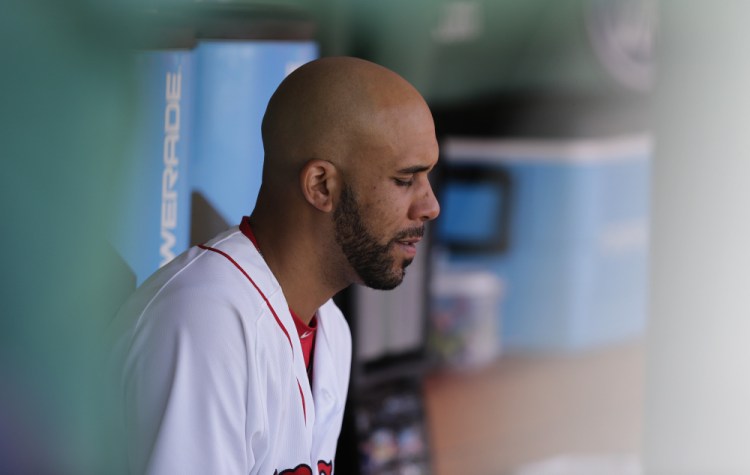April is a time for snap judgments in baseball. Especially in Boston. It’s the time of year when fans decide how much they are willing to invest – both emotionally and monetarily – in the baseball season.
It’s also a time when things can be wildly distorted.
Take the 2016 Red Sox. They lumbered into Atlanta at about 5 a.m. Monday morning, with the glow of a 12-inning win at Houston a foggy memory. Boston got right back to work some 14 hours later, ready to open their final series at Turner Field with a .500 record.
It’s hard to tell a lot about a team that has won as many games as it has lost. Are the Sox as good as they’ve looked in those nine wins – a team that led the American League with 90 runs scored through Sunday, a team that cranked out 55 hits over the previous four games?
Or, were they as bad as they looked in those nine losses – a team with the league’s worst ERA and the most relief innings pitched of any team?
The Sox signed David Price last winter to a seven-year, $217 million contract to solidify the top of the rotation. Yet Price hasn’t pitched like an ace – at least not yet. He took a 7.06 ERA on this road trip, averaging just 51/3 innings per start.
Craig Kimbrel was the other big offseason acquisition, and he’s also struggled to acclimate himself to Boston. He returned to Atlanta, where he began his career, with a 5.00 ERA. He suffered his first blown save Sunday night. He already took a loss in the Fenway opener.
It would be easy to jump to the conclusion that Price and Kimbrel are the latest in a long line of big-money Boston busts, but doing so would be premature.
In fact, a look at the early-season histories of Price and Kimbrel would reveal that 2016 is not unusual – both stars have suffered slow starts in the past.
Price’s career ERA in March and April is 4.14, a run higher than his overall ERA (3.15). His WHIP is higher in April than in any other month, and his strikeouts-per-nine-innings is the lowest.
Last year Price had a 3.48 ERA at the end of April, a full run higher than the league-leading 2.45 ERA he would finish the season with.
Similarly, Kimbrel has struggled at the start of past seasons. His March/April ERA is 3.03 – nearly double his career mark of 1.71. In fact, his ERA drops significantly as the season wears on: May (2.76), June, (1.29), July (0.84) August (0.76). In September and October, Kimbrel’s career ERA rises slightly to 1.55.
Last year, Kimbrel’s ERA was a staggering 5.19 at the start of May. In fact, he wouldn’t really get comfortable until the end of an 11-game stretch from April 18 to May 19 when he allowed 10 earned runs in 92/3 innings.
Over the remainder of the season, Kimbrel posted a 1.44 ERA and .155 opponents’ batting average – the second-lowest of any National League pitcher with a minimum 40 innings pitched in that span.
Power pitchers often take a little while to settle into a season. Those early-season struggles are often magnified, especially when they are trying to earn the faith of a new fan base. Yet snap decisions based on a small sample size are often forgotten by the end of a long baseball season.
The Sox have looked both good and bad over the first month of the season. May is fast approaching. We’ll have a much better feel for what this team really can do by the middle of that month.
Tom Caron is a studio host for the Red Sox broadcast on NESN. His column appears in the Portland Press Herald on Tuesdays.
Send questions/comments to the editors.


